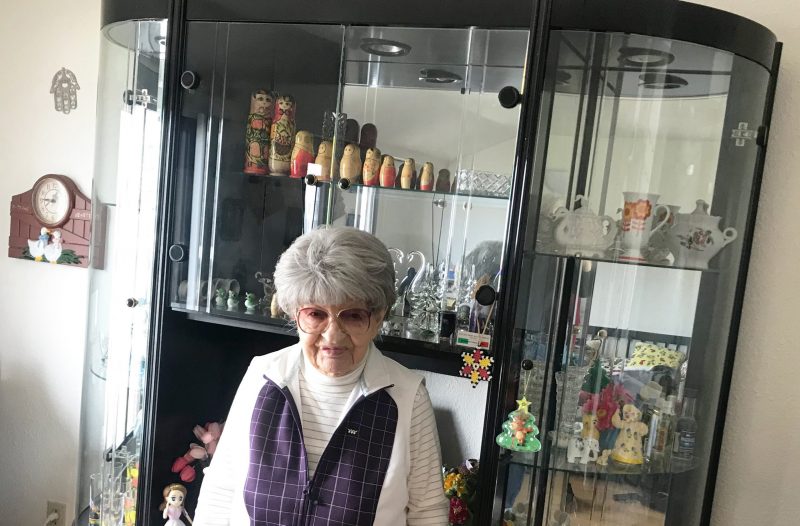The train steaming east across the Russian heartland was packed with hundreds of refugees and livestock, crammed into every available space in the freezing cars. They clung to the boarding steps, even the roofs. As it fled the onrushing Nazi war machine, the train was attacked from the air. Several cars were destroyed.
Fifteen-year-old Yekaterina Govzman was onboard. She and her family had been evacuated from their home in Kharkiv, Ukraine, ahead of the invaders. The journey to Siberia and safety consumed a bitter, terrifying month. “We were all very frightened,” Govzman recalled recently.
Now 95, Govzman has lived in San Francisco since 1997. The war ended long ago, but on May 9th she did what she often does on the date that marks the surrender of Germany in World War II: She donned a white jacket covered with medals honoring her service in the Soviet Red Army and its successful fight against fascism.
Young as she was when the war broke out, Govzman – called Katya by family and friends – had no hesitancy about enlisting. “We loved our country and wanted to protect it,” she said with the aid of her daughter, who acted as a translator. And to be honest, she added, there wasn’t a lot of choice about joining up. People who didn’t were seen as traitors.
Training took about five weeks. Not surprisingly, there was a heavy emphasis on political education: “It was the Soviet Union, after all,” her daughter noted. There was instruction on a variety of weapons and tactics. Asked about specifics, Govzman smiled and said, “it’s still top secret.”
Female fighters had equal status
Unlike the forces of the United States at the time, training units of the Red Army were mixed by gender. Women, she said, were treated equally.
Govzman and her classmates were later posted to Belorussia (now Belarus.) Like a lot of veterans, Govzman doesn’t like to tell war stories. “We did what the boss told us to do. I was near the front and it was dangerous for all of us.” By then, the Germans had begun their long retreat to Berlin during the frigid Russian winter. “They hated the cold,” she said, with no trace of sympathy.
Soviet losses during the war were horrendous. More than 10 million combatants were killed and more than 13 million civilians perished. The surrender of Germany was a joyous occasion.
“People went into the streets and laughed and hugged and cried,” Govzman said. Looking back at her wartime service, she does have a regret – the loss of much of her youth. “Those should have been the best years of my life. I missed so many normal things, like dating,” she said.
After the war, Govzman became a stenographer and worked at various government and union jobs. She married and had two children; a son and a daughter.
USSR collapse only felt like freedom
After years of decay, the Soviet Union collapsed in 1991, a shock to millions of Russians who had lived their entire lives under Communism and made enormous sacrifices during the war. But not Govzman. “It felt like freedom. Even under (former President Mikhail) Gorbachev, we were not free,” she said.
Her older sister had migrated to San Francisco, and with her aid, Govzman moved here 24 years ago. Before retiring, she did volunteer work for a Russian veterans organization and is pictured in one of its publications.
Govzman’s life in San Francisco is a comfortable one. She lives in supportive housing in a pleasant studio filled with mementos, family photos, and a collection of stuffed animals, including a beloved toy monkey she’s had for 50 years. A tall glass case contains a row of brightly colored Russian matryoshka dolls, and her bed is covered with a bright quilt.
She’s an avid reader, consuming Russian-language translations of romances by writers like Danielle Steele and Sandra Brown, and books about the lives of the rich in the 17th and 18th centuries.
Visits with her sister and other relatives are an important part of her routine, and Govzman enjoys attending the craft classes, Bingo games, and meetings organized by her building’s management. Now and then, she’ll visit the third-floor balcony and observe life in the Tenderloin below. It’s a chaotic scene. There’s a homeless encampment just outside the door. But Govzman has seen much worse, and the war that consumed so much of her youth now seems very far away.

